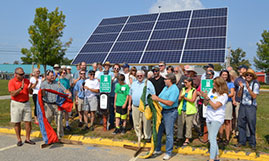Racial/Ethnic Income Equity
In 2017-2021, the average incomes of BIPOC* and Latino or Hispanic Mainers rose 3% but remained 31% below White Mainers, dramatically short of full equity.
No significant movement since the last available data
Benchmark: The average per-capita income of Mainers of color will improve to the state average by 2030.
Overview
The Council strongly believes that Maine will need the contributions of every resident to achieve a vibrant, sustainable economy. Increasing prosperity is not true progress unless it is equitably shared. This will require broad, deep, and long-term systemic change.
From 2017 to 2021, the average per capita income of BIPOC* and Latino or Hispanic Maine residents (10% of the population) was $25,419. This is 69% of the $37,105 average for white, non-Hispanic Maine. This represents an increase from 66% in 2016-2020, but it means that for every $10 made by white households, all other racial and ethnic groups made just $7.
This stark racial/ethnic income disparity is seen across New England and the United States. To counter it, Maine must improve access to training and education for residents of color, better support their communities and businesses, and address cultural biases and systemic disadvantages. No U.S. state has eliminated the racial income gap yet, but in Kentucky, New Hampshire, Washington, and West Virginia, households of color earn over 70% as much as White households.
*Black, Indigenous, People of Color
Fig. A
On mobile? Viewing this data is easier at a computer.
Average Per-Capita Income, 2017-2021
Source: U.S. Census Bureau
Fig. B
On mobile? Viewing this data is easier at a computer.
Maine Poverty Rate by Race/Ethnicity 2017-2021
U.S. Census Bureau







